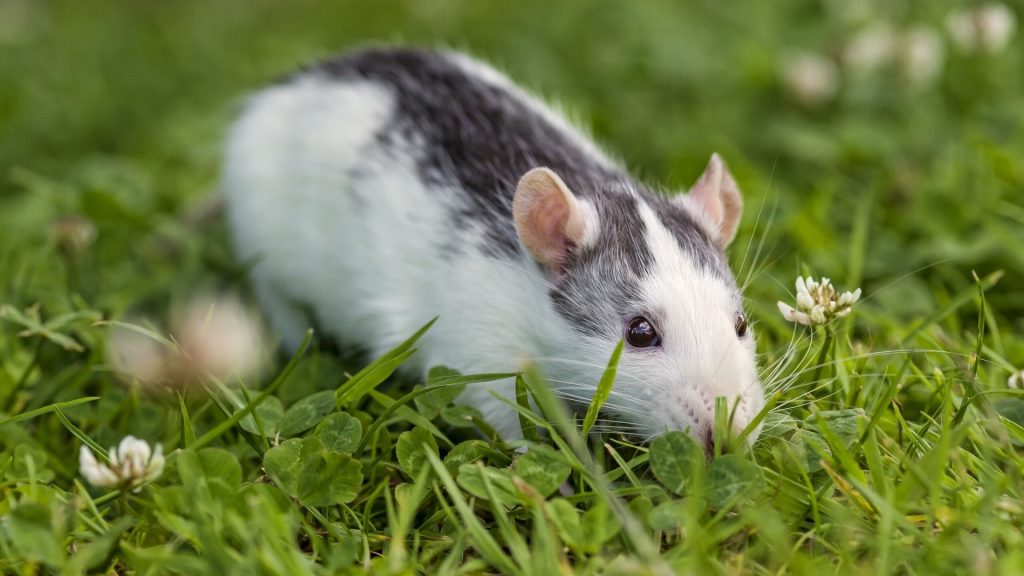Runa, an African giant pouched rat at the San Diego Zoo, is one of several rats serving as ambassadors to show the public the virtues of rats. These rats were provided by a Tanzania-based organization that trains African giant pouched rats to perform useful tasks such as detecting diseases, combatting wildlife trafficking, and finding people trapped in collapsed buildings. African giant pouched rats are twice the size of common brown rats and are known for their ability to detect landmines and other explosive material on battlefields. Efforts are underway to expand their use in detecting diseases in laboratory samples and identifying illegal goods at ports and airports. Despite their bad reputation, these rats are proving to be valuable assets in various fields.
In March, six African giant pouched rats completed their first trial working in the field at a port in Tanzania, where they were tasked with detecting smuggled goods, including pangolins. Pangolins are among the most trafficked animals in the world, with their meat considered a delicacy in Vietnam and some parts of China, and their scales used in traditional Chinese medicine. Wildlife contraband is often concealed among shipping containers that leave ports in Tanzania and other African countries. Runa, a rat at the San Diego Zoo, was initially trained to find landmines but has excelled as an ambassador, changing people’s perceptions of rats. During a recent training session, Runa quickly found small vessels of chamomile tea hidden in a box, demonstrating her keen sense of smell.

Nicki Boyd, a member of the San Diego Zoo and Wildlife Alliance, emphasized the importance of rats in combatting wildlife trafficking, which is detrimental to the species that the zoo is working to protect in the wild. The illegal animal trade is a destructive practice that threatens the survival of many species. By using rats to detect smuggled goods, including wildlife contraband, the zoo hopes to raise awareness about the issue and contribute to efforts to stop the illegal trade.
Despite the potential for rats to be used in various fields, they still face challenges in winning over everyone. Recently, New York Mayor Eric Adams introduced Kathleen Corradi, a former elementary school teacher and anti-rat activist, as the city’s new “rat czar” tasked with battling the potentially millions of rats in the city. The city’s job posting for the position included a request for applicants who were “bloodthirsty” and had “killer instincts” to commit to the “wholesale slaughter” of rats. Corradi, who expressed her hatred of rats, vowed to use science to rid the city of them. While rats have proven to be valuable assets in detecting diseases and combating wildlife trafficking, they still face negative perceptions and challenges in some areas.

While rats have proven to be valuable assets in various fields, they can also spread diseases such as leptospirosis, which can cause serious health problems. However, Izzy Szott, a behavioral research scientist at APOPO, a Tanzania-based organization that trains rats to work for governments, wants people to understand the full picture. She hopes that ambassador rats at renowned zoos, like San Diego’s, will lead to more understanding and support for rat research. New York City spokesman Fabien Levy acknowledges that rats are a public health risk and the city is committed to ridding itself of them using humane techniques where possible. However, Szott points out that rats are actually quite clean animals and often affectionately lick their trainers’ arms after getting a good scratching.
Szott emphasizes the importance of treating rats humanely and recognizing their capabilities. While rats often get a bad reputation, they are important members of the wildlife community and share the planet with humans. African giant pouched rats, for example, have been trained to detect landmines and diagnose tuberculosis in Africa. At the APOPO facility in Tanzania, researchers are also working on training rats to detect contaminated soil and help rescuers find people trapped under rubble after disasters. The rats are outfitted with tiny vests and pendants that allow them to alert their handlers when they find a person in need of rescue. These efforts demonstrate the valuable contributions that rats can make to society.

Szott believes that African giant pouched rats could someday be used as a cheaper alternative to drug- and explosive-sniffing dogs at ports and airports. One of the rats in her program has already shown the ability to sniff out multiple species, and they could potentially be used to stop the trafficking of elephant ivory and rhino horn. While New York City’s common brown rats share similar traits, their shorter lifespan makes them less suitable for such training. African rats can live up to a decade, providing more time for training and service. Szott hopes that the ambassador rats at zoos will help people understand the intelligence and capabilities of rats and how to coexist with them.
